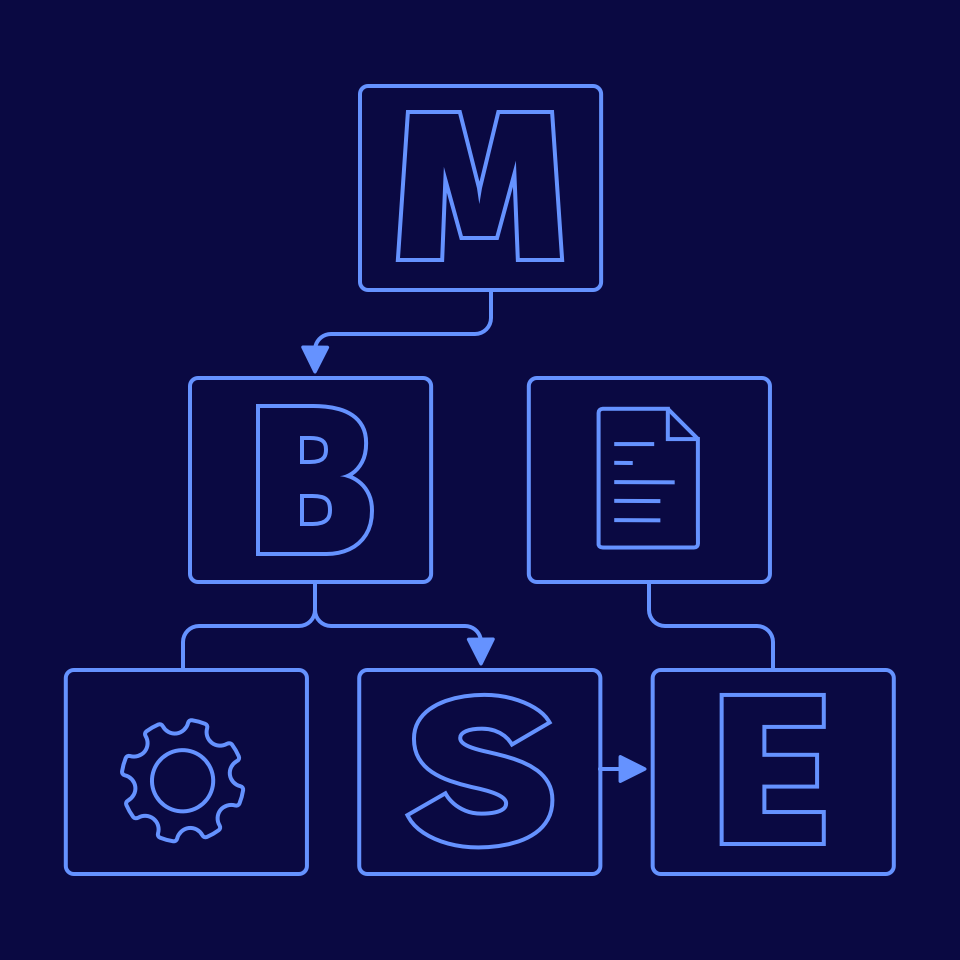Powering The Next Generation MBSE
The Metagraph technology enables the next generation of MBSE to be not only model-based – but also model-centric. MBSE based on the metagraph technology provides the ability to integrate complex logic across products and services, including software, electronics, and mechanics, at all necessary abstraction levels. It serves as the common reference for all systems needing to interact around the shared model.
Today, tools and modeling languages supporting MBSE are not developed to deliver configurable models that can dynamically produce digital twins in pace with the real products to be delivered and lifecycle-managed.
Current MBSE Approach Drawbacks
Despite significant advances in modeling languages like SysML 2.0, current MBSE solutions have serious problems providing support for capabilities essential to navigate complexity such as system and product variability.
While transitioning from document-based to model-based systems engineering may be a significant step for many, it is indeed high time to take the next step. The new big thing that significantly impacts MBSE is that models in the form of digital twins, reflecting the real product throughout its lifecycle, need to be created and managed in a scalable manner.
Today, tools and modeling languages supporting MBSE are not developed to deliver configurable models that can dynamically produce digital twins in pace with the real products to be delivered and lifecycle-managed.
The Requirement, Functional, Logical, and Physical (RFLP) approach, often used in MBSE is aiming to translate customer requirements more effectively into specifications for physical realizations. However, the RFLP is a waterfall methodology and was developed at a time when a significant portion of the definition model didn’t need to be dynamic, supporting their digital twins with configuration and simulation knowledge throughout their entire lifecycle.
Furthermore, the approach was clearly developed at a time when software and servitization didn’t dominate the development to such a high extent.
From Model-Based To Model-Centric
In this increasingly complex world, MBSE must now assume a much greater responsibility to deliver and manage dynamic models throughout their lifecycle in a scalable manner. Moreover, MBSE must take on the responsibility of configuration management in an increasingly software-focused world, where traditional 150% Bills of Materials (BOMs), designed for physical products, fall short.

From now on, MBSE must be based on robust modeling capability enabling dynamic and model-centric handling of system requirements, design, configuration, simulation, verification, and validation of products and services, including their digital twin counterparts, throughout their lifecycle. This can only be achieved with the help of new metagraph technology that can handle abstractions, configurations, and multi-dependencies in a much more effective manner.
About MBSE
Model Based Systems Engineering (MBSE) is an approach to systems engineering that emphasizes the creation and use of models as primary artifacts to support system requirements, design, analysis, verification, and validation activities throughout the system lifecycle. Compared to previous systems engineering approaches, which primarily relied on document-centric methods, MBSE has resulted in several improvements, including visualization, collaboration, and reusability.
MORE INITIATIVES
Through comprehensive data integration, enhanced metadata management and improved data quality inorigo® reinvents Data Governance. Secure data sharing is facilitated, promoting transparency and accountability.
inorigo® connects master-data, reference-data and meta-data into a dynamic Meta-context, distributing the data governance and ownership to business. It allows for managing new relations cross domain with speed and precision, automated where appropriate.
